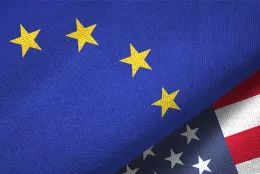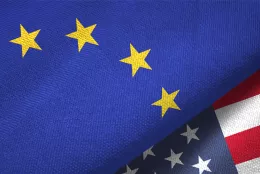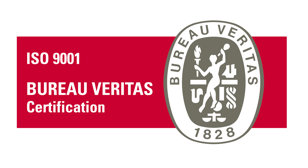Article

BREXIT: implications for IP
The roller coaster ride of speculation and negotiation is set to continue for several more months as Article 50 has now been extended until 31 October 2019. This provides additional time for the draft Withdrawal Agreement setting out the terms of departure from the European Union to be ratified by the UK Parliament after three failed attempts to date.
Unless the draft Withdrawal Agreement is ratified or an alternative arrangement is negotiated in the extended time period, Article 50 will come into effect with no formal agreement in place and the United Kingdom will cease to form part of the European Union with effect from 31 October 2019, ‘exit day’. WTO terms will govern future trading relations between the UK and the EU pending negotiation of a future trade agreement.
To cater for a ‘no deal’ scenario, the UK government has published several notices and corresponding legislative texts relating to the effect of EU rights and measures in the UK post exit.
It is important to note that substantially the same changes will occur in the event the draft Withdrawal Agreement is ratified, the main difference being the date that the changes come into force as the Withdrawal Agreement includes a transitional period ending 31 December 2020, which will be ‘exit day’ in a ‘deal’ scenario.
In this article we examine the consequences of Brexit (‘deal’ or ‘no deal’) in relation to intellectual property rights with a particular focus on trade marks and designs; patents and copyrights are largely unaffected by the UK departure from the EU.
The core changes may be summarized as follows:
Trade Marks
From exit day, all existing registered EUTMs will be treated as if they have been applied for and registered under UK law. All registered EUTMs will therefore be cloned onto the UK Register as a comparable UK trade mark right.
The comparable right will be recorded onto the UK Register automatically and at no cost. The newly created right will retain the same filing date as recorded against the corresponding EUTM and also any priority and/or seniority dates.
For EU designations of International marks, the comparable right cloned onto the UK Register will be a UK national mark and not a UK designation of an International mark.
The UK Office will not issue a corresponding registration certificate for the newly created right but details of the mark will be accessible on the UKIPO website. The newly created right will retain the same registration number as the corresponding EUTM prefixed with UK009, for example EUTM N° 017867542 becomes UK00917867542.
The existing address for service rules will continue to apply and there is no need to change the recorded address for service.
The UK Office will use the English version of the specification of goods and services appearing on the EUIPO Register. If English is not the first or second language of the original EUTM, the owner of the newly created right will be able to correct any translation errors.
The new UK right comes into force on exit day and will be subject to separate renewal in the UK even though the corresponding EUTM may have already been renewed in the 6 months prior to the renewal date. The UK Office will however waive additional fees due for the late renewal of marks in the 6 month grace period.
EUTMs that have expired prior to exit day, but may still be late renewed in the 6 month grace period, will also be cloned onto the UK Register but marked ‘expired’ and their continued effect will be dependent on late renewal of the corresponding EUTM. In the absence of late renewal of the EUTM, the comparable UK right will be removed from the UK Register on expiry of the late renewal period but with effect from exit day.
The newly created right may form the basis of proceedings before the UK courts and Intellectual Property Office. It may be licenced, assigned or the subject of a security interest independently from the corresponding EUTM; recordal of registrable transactions will be required before the UK Office within 12 months from exit day as these will not be carried over automatically from the EU Register.
It should be noted that rights that have been assigned, but for which the recordal has not been made before the EUIPO, will result in the cloned right being created in the name of the assignor – it will therefore be necessary to record the transfer of the comparable right before the UK Office.
EUTMs that have been withdrawn or refused on exit day and for which conversion has requested prior to exit day will be honoured by the UK Office. However, for cases where the conversion request has not been filed before exit day, these will not be cloned onto the UK Register. Where conversion is sought after exit day, it will be necessary to file a separate application before the UK Office claiming the filing/priority date of the corresponding EUTM.
It is possible to opt out of holding the comparable UK right by submitting a notice to the UK Office but this option is not available in cases where the comparable right has been used in the UK or has been assigned, licensed or is the basis for litigation.
Use made of a mark anywhere in the EU prior to exit day will be considered to include use of the comparable right in the UK; a similar approach will be taken in relation to reputation.
From exit day, applicants of pending EU trade mark applications will be able to apply to register a corresponding UK trade mark for the identical mark and for goods and services which are identical to or contained within the corresponding EU coverage. There will be 9 month priority period from exit day for the re-filing of such applications in order to retain the EUTM filing/priority date along with any UK seniority claims.
It should be noted that EUTM applicants will not be notified by the EUIPO of this option. If the details of the UK mark differ from those of the EUTM, the earlier filing/priority dates will not be respected.
EU Certification and Collective marks will also be cloned onto the UK Register but without the regulations governing use; the UK Office will contact the owners of the newly created rights when it is necessary to inspect the regulations (for example where the mark becomes subject to proceedings) and it will be necessary to provide an English language version of the regulations at that time.
Trade marks: practical points
- Audit the portfolio: identifying which marks will be cloned automatically onto the UK Register and all pending applications which may need refiling before the UK Office in the 9 month priority window,
- Consider adding UK designations to International registrations that currently designate the EU,
- Monitor renewal dates, including comparable rights requiring second renewal before the UK Office,
- Check that the creation of new rights does not breach any existing undertaking or agreement and record all regsitrable transactions before the UK Office,
- Consider changes to use currently made to avoid the risk of revocation post exit.
Design rights
- Registered Community Designs (RCDs)
As with EUTMs, Community Designs that are registered and published on exit day will be automatically cloned onto the UK Designs Register free of charge. They will be known as a “re-registered design” and will retain the same filing/priority date and registration date as the corresponding RCD. This will also apply to International design registrations designating the EU but as with trade marks, the newly created right will be a comparable national right not a UK designation of an International design.
As in the case of comparable trade mark rights, the newly created design registration may be licensed, secured, assigned and enforced as a separate right and must also be renewed independently from the original RCD. There is also an opt out provision except for designs that have been assigned or proceedings have been commenced based on the design.
Community designs that are pending on exit day may be refiled in the UK and the original filing/priority date will be retained if the new application is filed in the 9 months following exit day. To the extent that registration of a Community design takes only a few days, there are likely to be a relatively small number of Community designs pending on exit day. There will however be a greater number of International designs that designate the EU that are pending registration and publication.
However, where a Community design has registered but the publication has been deferred, it will also be necessary to file a new application in the UK within the 9 month priority period to allow for the filing/priority and registration dates to be carried over to the UK Register.
- Unregistered Community Designs (UCDs)
On exit day, Unregistered Community Designs will cease to have effect in the UK. To cater for this, the UK government is creating provision for an equivalent transitional right having the same effect in the UK, known as a “Continuing Unregistered Community Design” and will be enforceable in the UK for the remainder of the 3 year term of the corresponding UCD.
For designs created after exit day, the UK government has created a new right to provide equivalent protection to a UCD. It will be known as a “Supplementary Unregistered Design”. It will be created if a design is first disclosed in such a way that could have become known in the normal course of business to the circles specialized in the sector operating within the UK, a qualified country or a qualified territory. At the moment this includes the EU, Hong Kong, New Zealand and some smaller territories situated predominantly in the Caribbean.
After exit day, there will therefore be two potential unregistered design rights: if first disclosure occurs in the UK, this will give rise to the existing UK unregistered design right protection but if disclosure occurs in the EU, this will give rise to both a UCD and a Supplementary Unregistered Design. It should be noted that first disclosure in the EEA will no longer give rise to UK unregistered design right protection as is presently the case.
To the extent of the Supplementary Unregistered Design is a separate, independent right, in the event of invalidation of a UCD after exit day, the Supplementary Unregistered Design will need to be invalidated separately in the UK.
Design rights: practical points
- Audit the portfolio: identifying which designs will be cloned automatically onto the UK Register and all RCDs for which publication has been deferred or pending applications which may need refiling before the UK Office in the 9 month priority window,
- Consider adding UK designations to International design registrations that currently designate the EU,
- Monitor renewal dates to ensure both UK and EU versions are renewed in good time,
- Check that the creation of new rights does not breach any existing undertaking or agreement and record all registrable transactions before the UK Office,
- Consider the disclosure of new designs to ensure protection is maximized to complement appropriate filing strategies.
Pending proceedings and representation
Proceedings based on EU rights that are pending on exit day before the UK courts or IP Office will continue towards resolution on the basis of the law as it stood prior to exit day. Existing injunctions based on an EU right will continue to apply to the UK but EU-wide injunctions issued post exit will not apply to the comparable UK right. Separate proceedings will be required in the UK post exit to obtain relief in relation to use in the UK.
The UK rules regarding representation will remain unchanged. The rules currently permit representatives qualified in another EEA Member State to act before the UK Office. Cabinet Plasseraud also has a qualified UK Chartered Trade Mark Attorney who will remain able to represent clients before the UK IPO.
In contrast, all inter partes cases pending before the EUIPO on exit day that are based solely on UK rights will be dismissed. In the same way, fresh proceedings will need to be filed separately against the newly created comparable UK rights.
From exit day, legal practionners or professional representatives based in the UK will no longer be able to act before EUIPO. In all pending cases before the EUIPO that require representation and the current representative is based in the UK, the Office will invite the applicant/owner to appoint a new representative.
Exhaustion of rights
The UK government positon is that EEA-wide exhaustion will continue to apply in the UK. For goods therefore that have been marketed in the EEA after exit day, they may be freely imported into and sold in the UK. The converse may not however be true and at the time of writing, it appears likely from a European perspective, that goods first marketed in the UK after exit day are not considered to have been exhausted and may therefore be blocked from entering the EEA without consent.
Customs Applications for Action (AFAs)
AFAs covering the UK filed via UK Customs will remain unaffected. However, AFAs covering the UK filed via another Customs Office of one of the EU 27 Member States will no longer be recognized in the UK after exit day and so a fresh AFA will need to be filed via UK Customs to cover the UK post exit. Similarly, AFAs covering the EU 27 Member States filed via the UK Customs will need to be refiled.
Geographical Indications (GIs)
The UK government is creating GI schemes that mirror the EU schemes and use the same EU GI classes. All existing UK products which have EU GI status will automatically gain UK GI status. However, existing EU GIs may need to apply to secure UK GI status.
Domain names (.eu etc.)
Some domain name extensions (.eu .bg .fr .hr .it .se .sk) require the holder to have an establishment in the EU. UK holders with no such establishment are therefore no longer qualified to hold such domains and may not therefore renew them.
Agreements referring to EU
For existing agremeents that refer to the EU, there is probably no need to renegotiate to the extent that the intention of the parties was clearly to include the UK at the agreement was executed. However, business critical agreements may warrant closer review on a case by case basis.
Similarly, reference to EU rights will most likely be construed to include the cloned UK comparable rights created post exit. However, for all agreements negotiated after exit day, these should take particular care to specifically cover the UK and all cloned rights as necessary.
Practical points
- Identify pending disputes before EUIPO that may be dimissed as based solely on a UK right,
- Identify EUIPO cases that may require new appointment of professional representation,
- Consider future litigation strategy to obtain most appropriate relief in the EU and UK,
- Audit domain name portfolio and ensure relevant transfers are made,
- Consider impact of exhaustion regime on distribution agreements,
- Consider changes to labelling of goods sold in UK which refer to an EUTM/RCD,
- Review existing agreement definitions of governing law, jurisdiction and territories.
Other IP rights
- Community Plant Variety Rights (CPVRs)
The UK government has indicated that all CPVRs granted before 29 January 2019 will continue to be protected in the UK. In order to ensure that protection is afforded in the UK for varieties which have been granted Community plant variety rights as from 29 January 2019, a new application to the competent UK authority must be made.
- Copyright
The international treaties that underpin copyright legislation in all EU Member States are independent of EU membership. However, there are several EU specific mechanisms including the following:
- Sui generis database rights: after exit day, there will be no obligation for EEA States to provide database rights to UK nationals, residents and businesses,
- Country-of-Origin principle for copyright clearance in satellite broadcasting: UK broadcasters that currently rely on this rule when broadcasting in the UK may need to clear copyright in each Member State in which they intend to broadcast after exit day.
- Supplementary Protection Certificates (SPCs)
A Supplementary Protection Certificate is a right that comes into force at the end of a patent term of protection to extend the term by up to 5 years for a marketed medicine or plant protection product covered by the patent. SPC legislation is derived from an EU Regulation but are maintained on a country-by-country basis.
After exit day, the EU Regulation on SPCs will no longer apply in the UK. The UK government has however indicated that current SPC legislation will be retained in the UK. However, it is to be expected that SPC legislation and case law will diverge in the future as the EU and UK systems evolve separately.
Moreover, applying for marketing authorisations required for SPCs will change after exit day and such authorisations may only be granted from the UK Medecines & Healthcare Product Regulatory Agency (MHRA) and no longer before the European Medecines Agency (EMA). Clarification is expected from the UK governmnent on the transitional provisions and future application procedure shortly.
- Patents
As indicated above, patents are largely unaffected by the UK departure from the EU to the extent existing patent legislation is not tied to EU mechanisms. The European patent system is therefore not affected.
However the Unitary Patent and the Unitary Patents Court system, implementation for which requires ratification which has yet to take place pending a constitutional review petition before the Constitutional Court in Germany, is tied to EU mechanisms.
To the extent the Unitary Patents Court system requires membership of the EU and the Unitary Patent is based on an EU Regulation, the future system as initially foreseen will not include the UK if the German Constitutional Court approves the ratification by Germany after exit day. This has been confirmed by the UK government.
Conclusion
Many of the above issues have complex implications for IP rights having effect in the UK. Cabinet Plasseraud’s team of specialized IP attorneys are on hand to guide you through the above practical points to provide tailored strategic advice to suit your specific needs, particularly in the ‘no deal’ scenario, in which case exit day will be 31 October 2019. Please contact your usual advisor to obtain further information and advice on these complex issues.


























